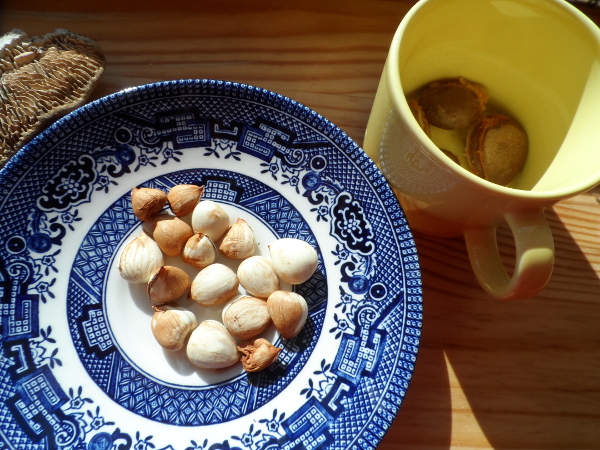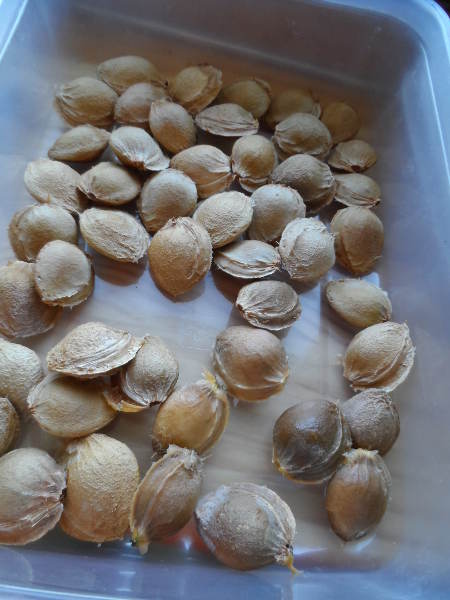


Usually people tend to value more apricot flesh than anything else in that fruit. You may even ask: what else can this fruit provide? But the most valuable thing is hidden inside the stoney seed, when you break it, you will find an almond-like seed or kernel, like a little heart. By taste it is often bitter, if not bred into a bitterless variety. These bitter seeds are considered a life saving food by many. Mostly they are known by the hunza people, living in the Northern Pakistan mountain area. Those seeds contain a natural substance called amygdalin (also laetrile) or vitamin B17. Amygdalin or laetril has power to eradicate or neutralise cancer cells and it poses no danger to healthy cells [1, 2].
How many apricot kernels a day?
Many experts will recommend a daily dose of apricot kernels from between 24 kernels a day up to 40 kernels a day, spread throughout the day. Hunza people eat around 20 bitter kernels with each meal [3].
For a person in remission, 16 apricot kernels a day should be used as a minimum.
It is also possible to find apricot kernels in powder form. The powder can be added to bread, cakes, cooked rice, soups or any recipe in general, thus being a pleasant and easy way to consume apricot kernels.
Other things rich in laetrile are millet grain and buckwheat grain. Breads made with these grains, however, generally do not contains also B17. Also, the seeds of berry plants, such as ref raspberries and black raspberries are rich in laetrile.
How does B17 works?
When the laetrile compound molecule comes across a cancer cell, it is broken down into 2 molecules of glucose, 1 molecule of hydrogen cyanide and 1 molecule of benzaldehyde. In the early days of laetrile research it was assumed that the hydrogen cyanide molecule was the major cancr cell killing molecule, but now it is known that it is the benzaldehyde molecule that is by far the major reason the cancer cell is killed.
The reason laetrile therapy takes so long to work, is because if the laetrile molecule happens to chemically react with the enzyme of a non-cancerous cell (i.e. rhodanese), before it reacts with the enzyme of a cancerous cell (beta-glucosidase), the rhodanese will brak apart the laetrile molecule in such a way that it can no longer kill a cancer cell. Thus you have to take enough laetrile molecules, over a long enough time, so that enought laetrile molecules coincidentally (as far as we know) hit all of the cancer cells.
One of the good side-effects of laetrile therapy is that more vitamin B12 is made in the body. With this in mind, make sure you supplement laetrile therapy eith vitamin C. Vitamin C and vitamin B12 are, by themselves, a treatment for cancer. [4] [5].
Tips:
References:
[1] http://www.ncbi.nlm.nih.gov/pubmed/25207888
[2] http://www.ncbi.nlm.nih.gov/pubmed/25136960
[3] http://undergroundhealthreporter.com/hunza-diet-health-weight-loss/#axzz3ddLfPZ7M
[4] http://www.cancertutor.com/laetrile
[5] https://www.youtube.com/watch?v=a10Sx-8uYwM
[6] http://www.ehow.com/how_2071727_increase-vitamin-b17-intake.html
Hear and watch more from the same topic:
https://www.youtube.com/watch?v=0YLp1XNsk2E
Insert date: 2015-07-29 Last update: 2015-08-31
Comment
![]()
![]()
![]()
Authors > Contributor writers > Enn Kaljo
Other foods